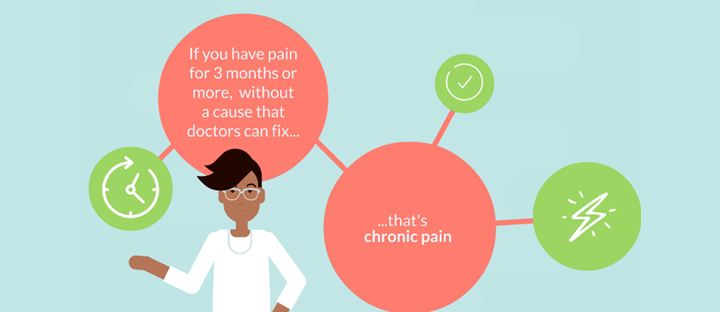The St. Louis Regional Health Commission (RHC) released a new website called www.BeyondPainSTL.com as part of its Chronic Pain Initiative, a regional effort to prevent and reduce the impact of chronic pain. Beyond Pain STL offers tools, information, and videos to our community: people with chronic pain, medical providers, and advocates.
The evidence is clear: non-pharmacologic, multidisciplinary treatments can help people living with chronic pain; yet, many providers and patients lack the tools to manage chronic pain effectively. Beyond Pain STL aims to fill this need by offering evidence-based pain management methods, presented in plain language and engaging media formats. Beyond Pain STL strives to put the power back in the hands of people living with pain. There is, unfortunately, no quick fix for treating chronic pain: “Substantial research demonstrates that effective treatment for chronic pain does not entail a singular pill solution,” states Heidi B. Miller, MD, Medical Director of the RHC’s Gateway to Better Health Program and the project lead for the RHC’s Chronic Pain Initiative. Therefore, the website helps set realistic expectations and give people with chronic pain the tools they need to thrive, despite the pain.
“Substantial research demonstrates that effective treatment for chronic pain does not entail a singular pill solution.”
Heidi B. Miller, MD
Beyond Pain STL covers a range of topics and strategies, including promoting healthy movement, regular sleep, and a balanced diet; however, the website prioritizes one topic in particular – emotional and mental health. Angela Fleming Brown, CEO of the RHC, explains: “Emotional pain and chronic pain cannot be separated.” Chronic pain is recognized as a simultaneous disease of body and mind. Dr. Miller further elaborates, “My patients often talk about the profound emotional toll chronic pain takes on their lives.” One of Dr. Miller’s patients, Father Gerry Kleba, poignantly articulates this emotional suffering: “My pain is not nearly as severe as my disappointment.” Patients in pain most expertly understand the convergence of physical and emotional suffering. More tools are needed to educate providers about the growing body of research on this dual processing of chronic pain. Furthermore, patients need accessible resources on how to manage their pain – both physical and emotional. While people might need additional therapy or clinical services, Beyond Pain STL provides an entry point into the conversation about chronic physical and emotional pain and offers tools to help.
“My pain is not nearly as severe as my disappointment.”
Father Gerry Kleba
Merely providing information about chronic pain is not enough. Poverty and structural barriers often make following best practices for pain management impossible. For example, a person receiving minimum wage and living in a food desert (neighborhood without close access to a grocery store) will likely be unable to purchase fresh fruits, vegetables, fish, and nuts – recommended foods for chronic pain management. Therefore, in addition to information and resources, Beyond Pain STL shares advocacy opportunities to address structural and systemic barriers that exacerbate chronic pain and create health disparities. Angela Brown explains, “We want people to feel empowered to take action to manage their pain; however, we also understand that segments of our population, particularly communities of color, have additional barriers to fight to make positive lifestyle changes. Asking people to make impossible changes can feel disempowering. So, we committed to incorporating language about structural barriers and advocacy in our videos and website. Simultaneously, at the RHC, we are working to increase access to care and reduce health disparities through structural and political changes. We know chronic pain is complex, and its treatment will also be complex and multidimensional.”
We want people to feel empowered to take action to manage their pain; however, we also understand that segments of our population, particularly communities of color, have additional barriers to fight to make positive lifestyle changes.
Angela Brown, CEO
Help us get the word out about Beyond Pain STL. We encourage you to share the website, videos, and social media content with your community in one or more of the following ways:
- Send the website and videos to your friends, family members, providers, clients, and community
- Share resources, including our videos and sample social media posts on our media page, with your network
- Follow the RHC on social media and share our content on chronic pain
- If you are a provider seeing patients in-person at this time:
- Display the videos on the TVs in your waiting rooms

